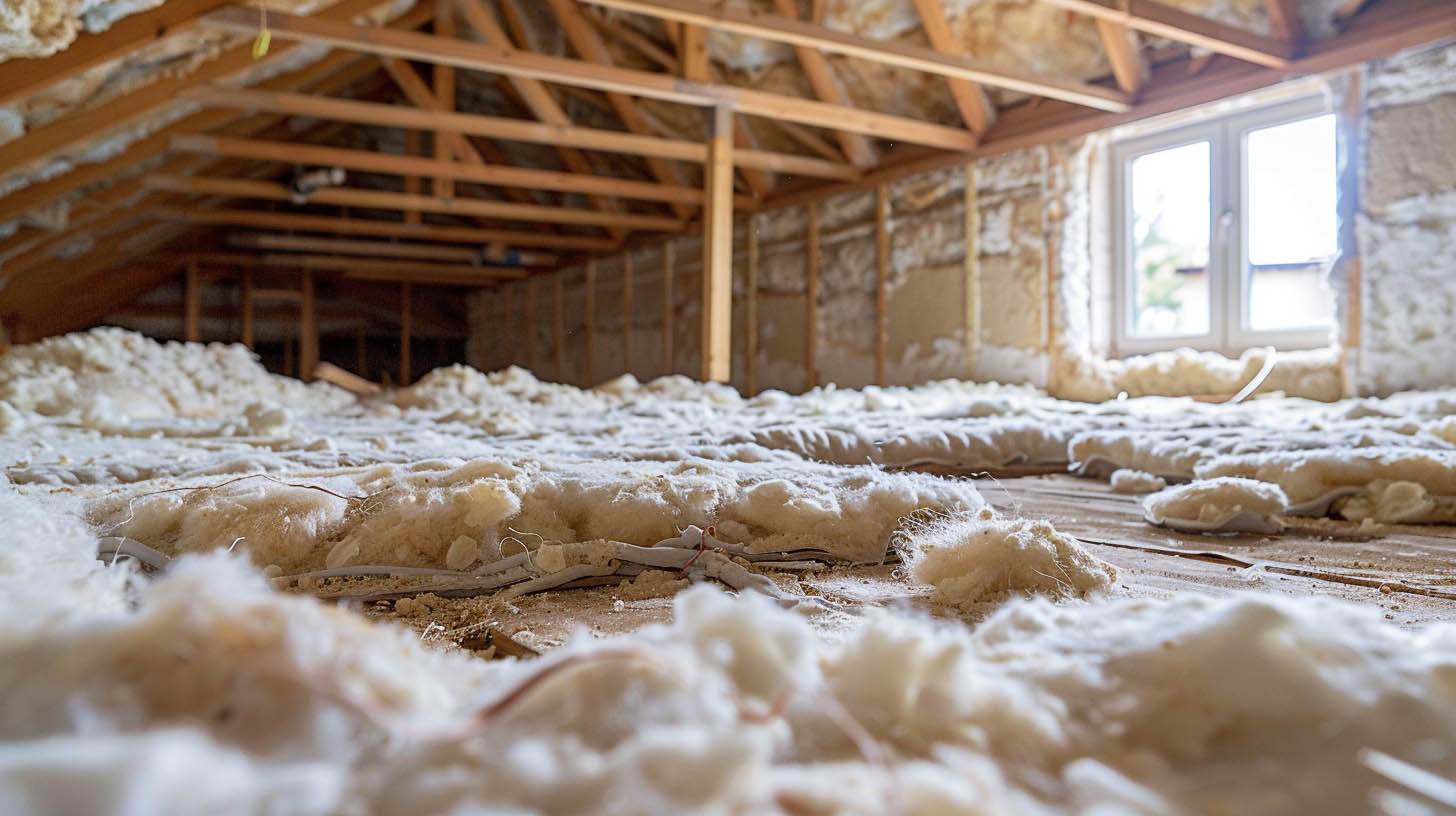Wet insulation in your home can lead to a host of problems, from reduced energy efficiency to structural damage. Understanding the causes of wet insulation and how to address it is crucial for maintaining the health of your home. Below, we discuss the impact of wet insulation and provide guidance on keeping your insulation dry.
The Risks of Moisture in Insulation
Efficiency Loss: Insulation materials like fiberglass wool, cellulose, and expanding foam are designed to trap air and reduce heat flow. However, when these materials become wet, they clump together or break apart, significantly diminishing their insulating properties.
Mold and Structural Damage: Wet insulation can also lead to mold growth, which not only affects air quality but can also cause wood rot and other structural damage over time.
Common Causes of Wet Insulation
- Air Gaps: Small openings in siding or around windows can allow moisture to enter and saturate insulation.
- Condensation: Without adequate vapor barriers, high humidity inside your home can lead to condensation in wall cavities and attics, affecting the insulation.
- Roof Leaks: Water from roof leaks can seep into attic insulation, compromising its effectiveness and potentially leading to mold issues.
- Plumbing Leaks: Leaky pipes can cause localized wet spots in insulation, requiring both plumbing and insulation repairs.
Preventative Measures and Solutions
Regular Inspections: Regularly check your roof, plumbing, and insulation for signs of moisture. Address any issues promptly to prevent widespread damage.
Improve Ventilation: Enhancing attic and wall ventilation can help reduce humidity levels and prevent condensation.
Use a Dehumidifier: In areas with high indoor humidity, using a dehumidifier can help maintain dryer conditions within your home.
Professional Help: For significant insulation damage, consult with a professional like Trojan Roofing in Indianapolis. We specialize in diagnosing and resolving insulation issues, ensuring your home remains dry and energy-efficient.
Conclusion
Managing moisture in your home is essential for maintaining effective insulation and overall structural health. By understanding the causes and implementing effective solutions, you can protect your investment and enhance your living environment.
For more information on how much snow your roof can handle, click here.

